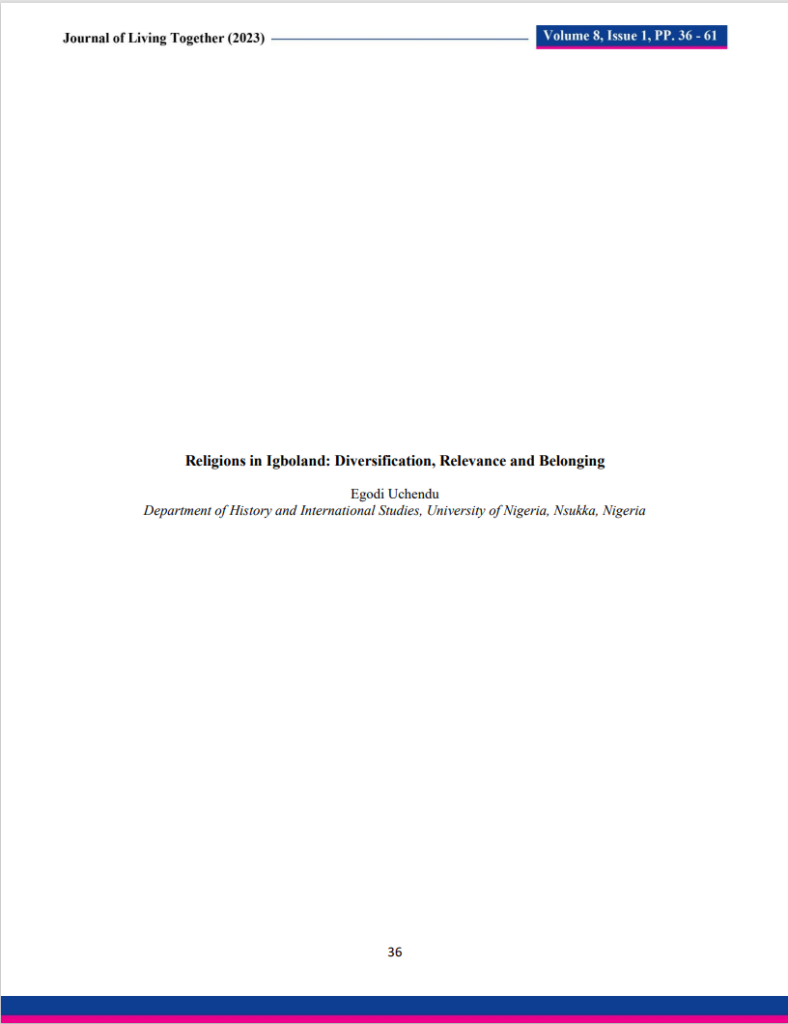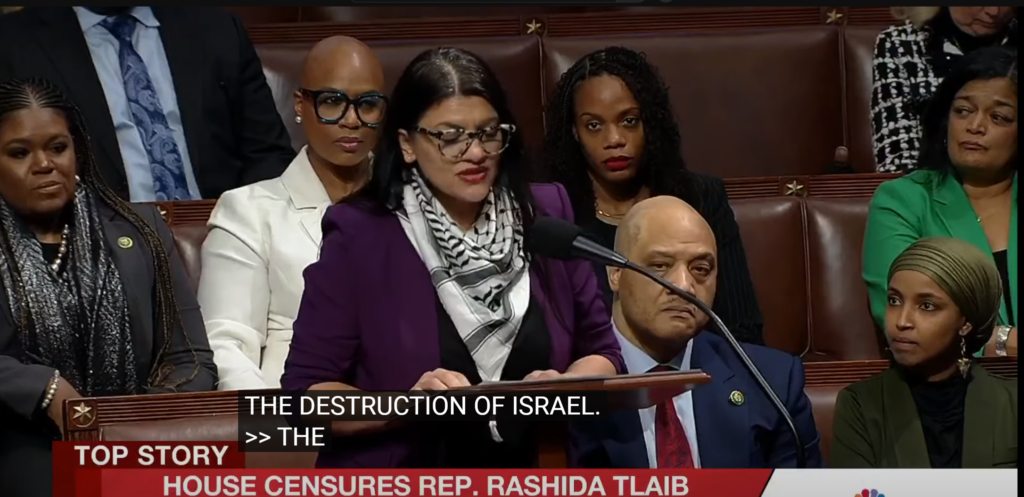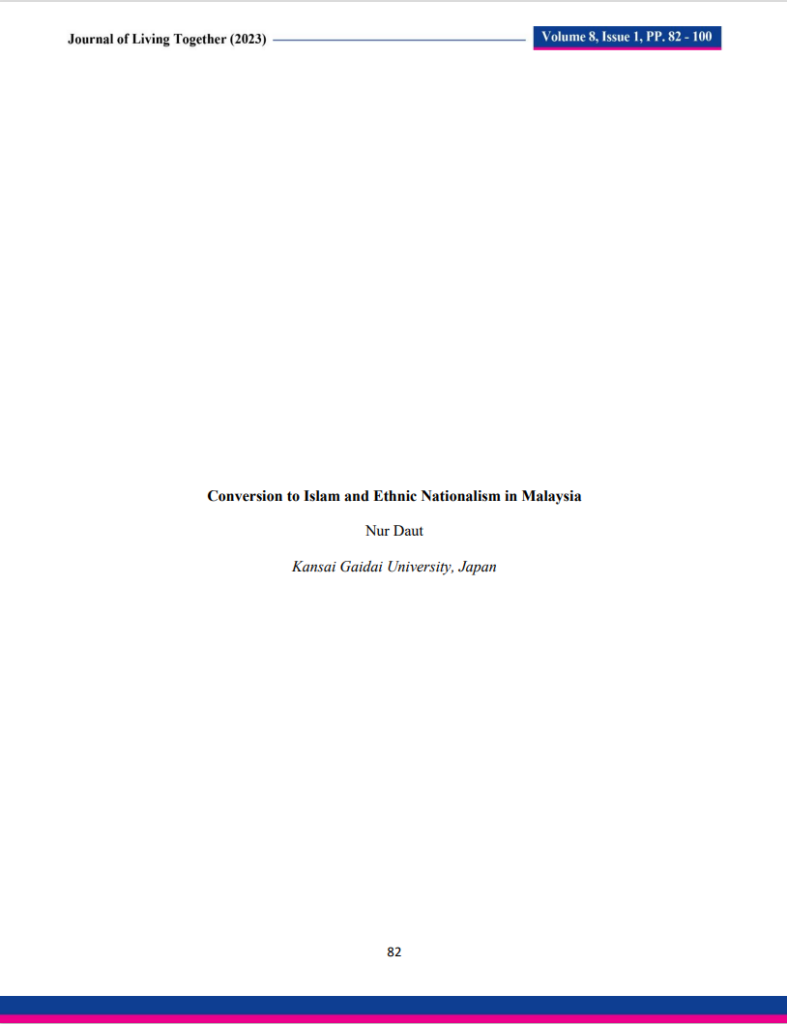The Need for a Conflict Assessment Concerning the Sacred Esplanade of Jerusalem
Introduction
Within the much-disputed borders of Israel lies the Sacred Esplanade of Jerusalem (SEJ).[1] Home of the Temple Mount/Noble Sanctuary, the SEJ is a place long considered holy by Jews, Muslims, and Christians. It is a disputed swath of land, in a city center, and layered with ancient religious, historical, and archeological significance. For more than two millennia, people have lived, conquered, and made pilgrimages to this land to give voice to their prayers and faith.
Control of the SEJ affects the identity, security, and spiritual longings of great numbers of people. It is a core issue of the Israeli-Palestinian and Israeli-Arab conflicts, which contribute to regional and global destabilization. To date, negotiators and would-be peacemakers have failed to acknowledge the SEJ component of the conflict as a dispute over sacred land.
A conflict assessment of the SEJ must be undertaken to shed light on the possibilities and barriers for peacemaking in Jerusalem. The assessment would include the perspectives of political leaders, religious leaders, the adherent public, and secular members of the community. By illuminating the core tangible and intangible issues, a SEJ conflict assessment would provide insights and recommendations for policymakers, and, most importantly, provide a foundation for future negotiations.
The Need for a Mediators’ Conflict Assessment
Despite decades of effort, negotiations for a comprehensive peace agreement to resolve the Israeli-Palestinian conflict have failed. With Hobbesian and Huntingtonian perspectives on religion, the primary negotiators and mediators involved in peace processes thus far have failed to appropriately address the sacred land component of the conflict.[2] A mediators’ conflict assessment is needed to determine if possibilities exist for developing solutions to the tangible issues of the SEJ, within their sacred contexts. Among the findings of the assessment would be a determination of the feasibility of convening religious leaders, political leaders, the devout, and the secular to engage in deliberative negotiations aimed at creating civic fusion—a state when disputants bond, despite continuing to hold disparate beliefs, by deeply engaging in the root issues of their conflicts.
Jerusalem as the Issue of Impasse
Although it is usual for mediators of complex disputes to build momentum for reaching agreements on seemingly intractable issues by reaching tentative agreements on less difficult matters, the issues of the SEJ appear to block agreement on a comprehensive peace agreement for the Israeli-Palestinian conflict. Thus, the SEJ must be fully addressed early in negotiations in order to make an end-of-conflict agreement possible. Solutions to the SEJ issues may, in turn, inform and impact solutions to the other components of the conflict.
Most analyses of the failure of the 2000 Camp David negotiations include the inability of negotiators to effectively approach issues related to the SEJ. Negotiator Dennis Ross suggests that the failure to anticipate these issues contributed to the collapse of the Camp David negotiations convened by President Clinton. Without preparation, Ross developed options in the heat of the negotiations that were acceptable neither to Prime Minister Barak nor Chairman Arafat. Ross and his colleagues also came to realize that Arafat could not commit to any agreements concerning the SEJ without support from the Arab world.[3]
Indeed, in later explaining Israel’s Camp David positions to President George W. Bush, Israeli Prime Minister Ehud Barak said, “The Temple Mount is the cradle of Jewish history and there is no way I will sign a document that transfers sovereignty over the Temple Mount to the Palestinians. For Israel, it would be a betrayal of the Holy of Holies.”[4] Arafat’s parting words to President Clinton at the end of the negotiations were similarly conclusive: “To tell me that I have to admit that there is a temple below the mosque? I will never do that.”[5] In 2000, then-Egyptian President Hosni Mubarak warned, “any compromise over Jerusalem will cause the region to explode in a way that cannot be put under control, and terrorism will rise again.”[6] These secular leaders had some knowledge about the symbolic power of the Sacred Esplanade of Jerusalem for their peoples. But they lacked the information necessary for understanding the implications of the proposals, and most importantly, they lacked the authority to interpret religious precepts in favor of peace. Scholars of religion, religious leaders, and simple believers would have understood the need to rely on religious authorities for support throughout such discussions. If in advance of the negotiations, a conflict assessment had identified such individuals and clarified areas ripe for negotiations as well as matters to avoid, negotiators might have had increased decision space within which to maneuver.
Professor Ruth Lapidoth offered an imaginative proposal during Camp David negotiations: “Her solution to the Temple Mount dispute was to divide sovereignty over the site into functional components such as the physical and the spiritual. Thus one party might gain physical sovereignty over the Mount, including rights such as controlling access or policing, while the other gained spiritual sovereignty, involving the rights to determine prayers and rituals. Better yet, because the spiritual was the more contested of the two, Prof. Lapidoth proposed that the parties to the dispute agree to a formula that attributed spiritual sovereignty over the Temple Mount to God.”[7] The hope was that by containing religion and sovereignty in such a construct, negotiators could find accommodations on the tangible issues related to responsibility, authority, and rights. As Hassner suggests, however, God’s sovereignty has very real implications in a sacred space[8], for example, which groups get to pray where and when. Consequently, the proposal was insufficient.
Fear and Cynicism of Religion Contribute to Impasse
Most negotiators and mediators have not appropriately engaged the sacred land component of the conflict. They seem to take lessons from Hobbes, believing that political leaders should appropriate the power that believers give to God, and use it to promote stability. Secular Western leaders also appear constrained by Huntingtonian modernity, fearing the irrationality of religion. They tend to view religion in one of two simplistic ways. Religion is either private, and therefore should remain separate from political discussion, or so entrenched in daily life that it acts as an irrational passion that would completely derail negotiations.[9] Indeed, at multiple conferences,[10] Israelis and Palestinians play into this notion, suggesting that naming any component of the conflict as religion-based will ensure its intractability and make resolution impossible.
And yet, efforts to negotiate a comprehensive peace agreement, without input from religious adherents and their leaders, has failed. Peace remains elusive, the region remains volatile, and extremist religious devotees continue to threaten and commit violent acts in attempts to secure control of the SEJ for their group.
A belief in Hobbes’ cynicism and Huntington’s modernity appears to blind secular leaders to the need to engage the devout, consider their beliefs, and tap the political powers of their religious leaders. But even Hobbes would have likely supported engaging religious leaders in seeking resolutions for tangible issues of the SEJ. He would have known that without the assistance of the clerics, believers will not submit to resolutions related to sacred-land issues. Without input and aid from clerics, the devout would be too concerned with “fears of the invisible” and the impact on immortality in the afterlife.[11]
Given that religion is likely to be a potent force in the Middle East for the foreseeable future, secular leaders need to consider how to engage religious leaders and believers in seeking resolution of issues related to Jerusalem as part of efforts for a comprehensive, end-of-conflict agreement.
Still, there has not been a conflict assessment conducted by a professional mediation team to discern the tangible and intangible SEJ issues that will need to be negotiated, and engage religious leaders that may need to help construct solutions and create the context for making those solutions acceptable to faith adherents. An intensive conflict analysis of the issues, dynamics, stakeholders, faith conflicts, and current options concerning the Sacred Esplanade of Jerusalem is needed to do so.
Public policy mediators routinely conduct conflict assessments to provide in-depth analyses of complex disputes. The analysis is preparation for intensive negotiations and supports the negotiation process by identifying the legitimate claims of each party independent of the others, and describing those claims without judgment. In-depth interviews with key stakeholders brings nuanced perspectives to the surface, which are then synthesized into a report that helps frame the overall situation in terms that are understandable and credible to all parties in the dispute.
The SEJ assessment will identify the parties with claims to the SEJ, describe their SEJ-related narratives, and key issues. Interviews with political and religious leaders, clergy, academics, and adherents of the Jewish, Muslim, and Christian faiths, will yield varied understandings of the issues and the dynamics associated with the SEJ. The assessment will evaluate issues in the context of faith differences, but not broad theological conflicts.
The SEJ provides a tangible focus for bringing to the surface faith differences via issues such as control, sovereignty, security, access, prayer, additions to, and maintenance of, structures, and archeological activities. Increased understanding of these issues may clarify actual issues in dispute and, perhaps, opportunities for resolutions.
Continued failure to understand the religious components of the conflict and their impact on the overall Israeli-Palestinian conflict will only result in continual failure to achieve peace, as evidenced by the collapse of the Kerry peace process, and the easily predictable, resulting violence and significant destabilization that followed.
Conducting the Mediators’ Conflict Assessment
The SEJ Conflict Assessment Group (SEJ CAG) would include a mediation team and an advisory council. The mediation team would be composed of experienced mediators with diverse religious, political, and cultural backgrounds, who would serve as interviewers and assist with a range of activities including identifying interviewees, reviewing the interview protocol, discussing initial findings, and writing and reviewing drafts of the assessment report. The advisory council would include substantive experts in religion, political science, the Middle East conflict, Jerusalem, and the SEJ. They would assist in all activities including advising the mediation team in analyzing results of interviews.
Gathering Background Research
The assessment would begin with in-depth research to identify and disentangle the many potential perspectives in play at the SEJ. The research would result in background information for the team and a starting point for finding people who can help identify the initial interviewees.
Identifying Interviewees
The mediation team would meet with individuals, identified by the SEJ CAG from its research, who would be asked to identify an initial list of interviewees. This would likely include formal and informal leaders within the Muslim, Christian and Jewish faiths, academics, scholars, experts, politicians, diplomats, lay people, general members of the public and the media. Each interviewee would be asked to recommend additional individuals. Approximately 200 to 250 interviews would be conducted.
Preparing Interview Protocol
Based on background research, past assessment experience, and advice from the advisory team, the SEJ CAG would prepare an interview protocol. The protocol would serve as a starting point and the questions would be refined over the course of the interviews to more effectively access interviewees’ deepest understandings of the SEJ issues and dynamics. The questions would focus on each interviewee’s narrative, including the SEJ’s meaning, key issues and components of their groups’ claims, ideas about resolving conflicting claims of the SEJ, and sensitivities concerning others’ claims.
Conducting interviews
The mediation team members would conduct face-to-face interviews with individuals worldwide, as clusters of interviewees are identified in particular locations. They would use video conferencing when face-to-face interviews are not feasible.
The Mediation team members would use the prepared interview protocol as a guide and encourage the interviewee to provide his or her story and understandings. Questions would serve as prompts to ensure that the interviewees gain an understanding of what they know enough to ask. In addition, by encouraging people to tell their stories, the mediation team would learn a great deal about things they would not have known to ask. Questions would become more sophisticated throughout the interview process. The Mediation team members would conduct interviews with positive gullibility, meaning a complete acceptance of all that is said and without judgment. The information provided would be assessed relative to the information provided across the interviewees in an effort to identify common themes as well as unique perspectives and ideas.
Using the information gathered during the interviews, the SEJ CAG would analyze each tangible issue within the separate context of each religion’s precepts and perspectives, as well as how those perspectives are affected by the existence and beliefs of the others.
During the interview period, the SEJ CAG would be in regular and frequent contact to review questions, problems, and perceived inconsistencies. Members would check on findings, as the mediation team brings to the surface and analyzes the faith issues that currently remain hidden behind political positions, and which frame the issues of the SEJ as a deeply intractable conflict.
Preparation of the Assessment Report
Writing the Report
The challenge in writing an assessment report is to synthesize great amounts of information into a comprehensible and resonant framing of the conflict. It requires a studied and refined understanding of conflict, power dynamics, negotiation theory and practice, as well as an openness and curiosity that enables mediators to learn about alternative worldviews and to hold varied perspectives in mind simultaneously.
As the mediation team conducts interviews, themes will likely emerge during discussions of the SEJ CAG. These would be tested during later interviews, and as a result, refined. The advisory council would review draft themes against interview notes as well, to ensure all themes have been thoroughly and accurately addressed.
Outlining of the Report
The report would include elements such as: an introduction; an overview of the conflict; a discussion of overriding dynamics; a list and description of key interested parties; a description of each party’s faith-based SEJ narrative, dynamics, meanings, and promises; each party’s fears, hopes, and perceived possibilities of the future of the SEJ; a summary of all issues; and observations and recommendations based on findings from the assessment. The goal would be to prepare faith narratives relative to the tangible SEJ issues for each religion that resonate with adherents, and provide policymakers with critical understandings of the beliefs, expectations, and overlaps across faith groups.
Advisory Council Review
The advisory council would review multiple drafts of the report. Particular members would be asked to provide an in-depth review and comments on the parts of the report that relate directly to their specialty. After obtaining these comments, the lead assessment report author would follow up with them, as needed, to ensure a clear understanding of the proposed revisions and revise the draft report based on those comments.
Interviewee Review
After the comments of the advisory council have been integrated into the draft report, pertinent sections of the draft report would be sent to each interviewee for review. Their comments, corrections, and clarifications would be sent back to the mediation team. Team members would then revise each section and follow up with particular interviewees by phone or videoconferencing, as needed.
Final Conflict Assessment Report
After a final review by the advisory council and the mediation team, the conflict assessment report would be completed.
Conclusion
If modernity has not eliminated religion, if humans continue to have “fears of the invisible,” if religious leaders are politically motivated, and if politicians exploit religion for political purpose, then surely a conflict assessment of the Sacred Esplanade of Jerusalem is needed. It is a necessary step toward successful peace negotiations, as it will tease out the tangible political issues and interests amidst religious beliefs and practices. Ultimately, it could lead to previously unimagined ideas and solutions to the conflict.
References
[1] Grabar, Oleg and Benjamin Z. Kedar. Heaven and Earth Meet: Jerusalem’s Sacred Esplanade, (Yad Ben-Zvi Press, University of Texas Press, 2009), 2.
[2] Ron Hassner, War on Sacred Grounds, (Ithaca: Cornell University Press, 2009), 70-71.
[3] Ross, Dennis. The Missing Peace. (New York: Farrar, Straus and Giroux, 2004).
[4] Menahem Klein, The Jerusalem Problem: The Struggle for Permanent Status, (Gainesville: University of Florida Press, 2003), 80.
[5] Curtius, Mary. “Holy Site Paramount Among Obstacles to Mideast Peace; Religion: Much of the Israeli-Palestinian dispute comes down to a 36-acre compound in Jerusalem,” (Los Angeles Times, September 5, 2000), A1.
[6] Lahoud, Lamia. “Mubarak: Jerusalem compromise means violence,” (Jerusalem Post, August 13, 2000), 2.
[7] “Conversations with History: Ron E. Hassner,” (California: Institute of International Studies, University of California Berkeley Events, February 15, 2011), https://www.youtube.com/watch?v=cIb9iJf6DA8.
[8] Hassner, War on Sacred Grounds, 86 – 87.
[9] Ibid, XX.
[10]”Religion and the Israel-Palestinian Conflict,” (Woodrow Wilson International Center for Scholars, Sept 28, 2013),, http://www.wilsoncenter.org/event/religion-and-the-israel-palestinian-conflict. Tufts.
[11] Negretto, Gabriel L. Hobbes’ Leviathan. The Irresistible Power of a Mortal God, Analisi e diritto 2001, (Torino: 2002), http://www.giuri.unige.it/intro/dipist/digita/filo/testi/analisi_2001/8negretto.pdf.
[12] Sher, Gilad. Just Beyond Reach: The Israeli-Palestinian Peace Negotiations: 1999-2001, (Tel Aviv: Miskal–Yedioth Books and Chemed Books, 2001), 209.
[13] Hassner, War on Sacred Grounds.
This paper was presented at the International Center for Ethno-Religious Mediation’s 1st Annual International Conference on Ethnic and Religious Conflict Resolution and Peacebuilding held in New York City, USA, on October 1, 2014.
Title: “The Need for a Conflict Assessment Concerning the Sacred Esplanade of Jerusalem”
Presenter: Susan L. Podziba, Policy Mediator, Founder and Principal of Podziba Policy Mediation, Brookline, Massachusetts.
Moderator: Elayne E. Greenberg, Ph.D., Professor of Legal Practice, Assistant Dean of Dispute Resolution Programs, and Director, Hugh L. Carey Center for Dispute Resolution, St. John’s University School of Law, New York.



